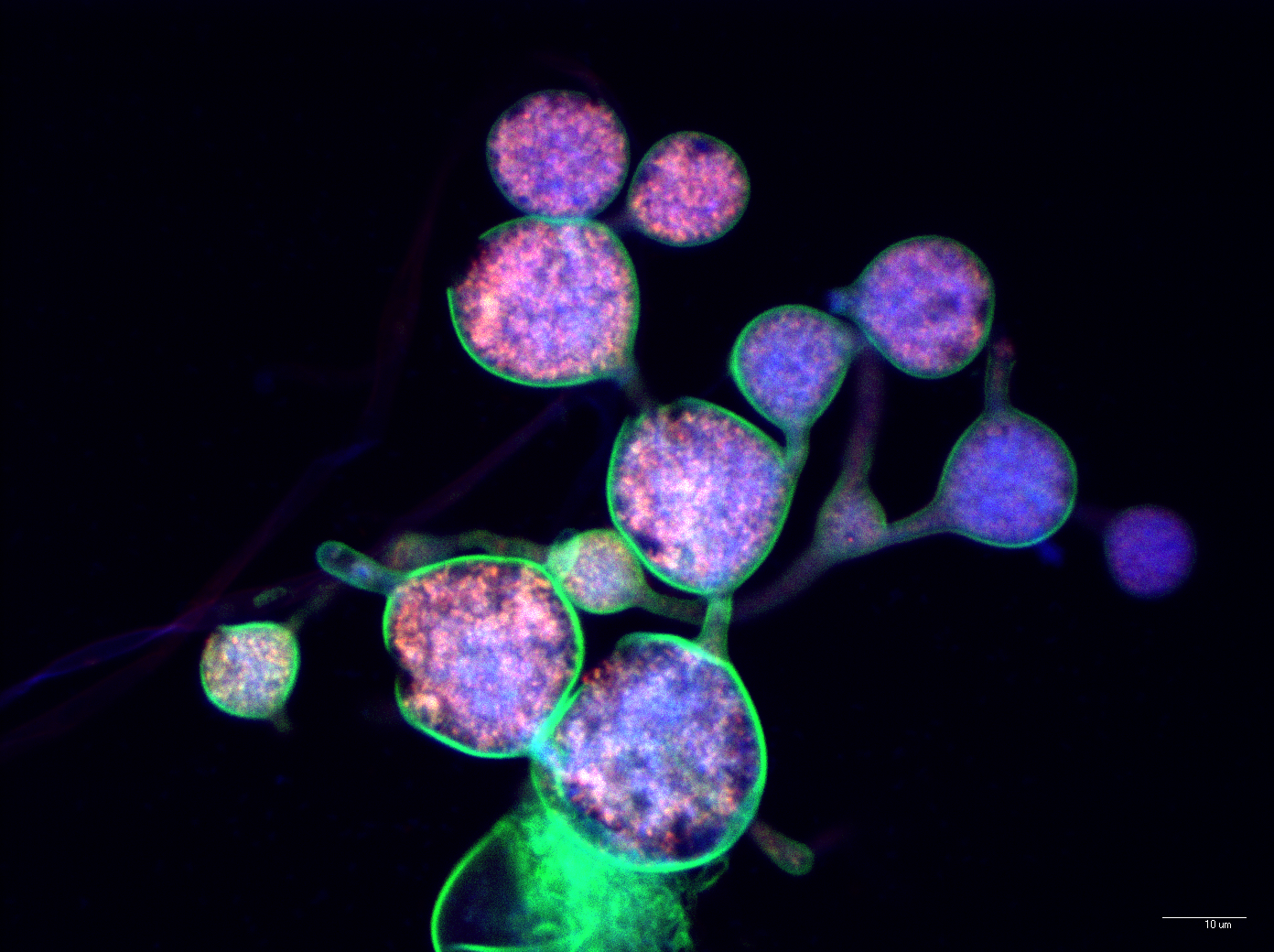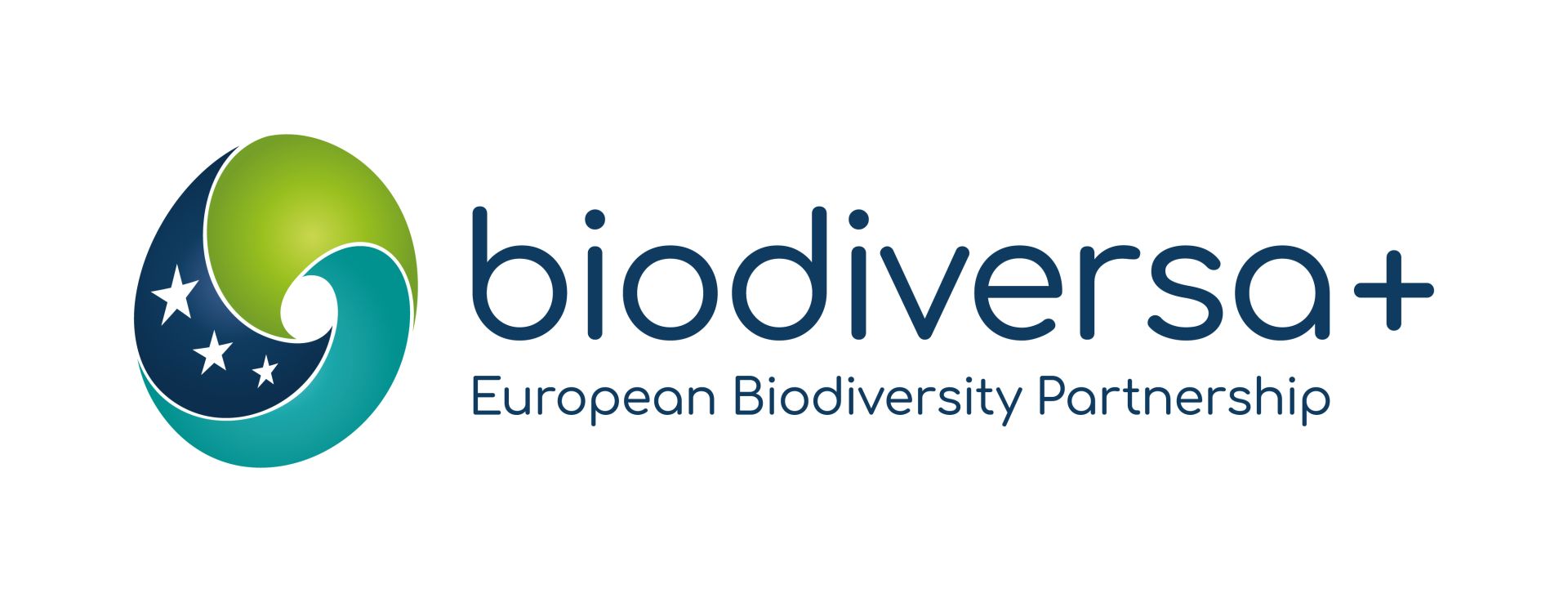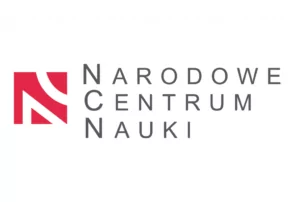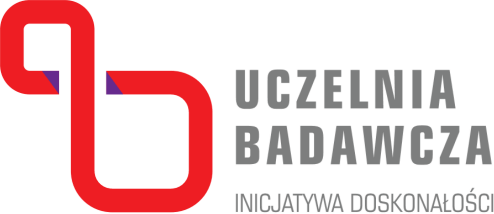Mycology
Research topics

(credit A. Miłobędzka)
Our group is mostly interested in evolutionary old lineages of land fungi (Mucoromycota) and their interactions with bacteria. Mucoromycota representatives are common fungi which can be found in various habitats all around the world. The vast majority of them are organisms which degrade dead organic matter. In recent years it has been discovered that some Mycoromycota may contain bacteria inside their hyphae. However, the diversity and factors influencing the frequency of occurrence or the effect on the host of these bacteria remains poorly understood. Our team studies evolution and ecology as well as physiology of this group of fungi. We are interested in their adaptations to extreme environments (Arctic, Antarctic, oil reservoirs in Iran, contaminated soil) and how endohyphal bacteria can influence these adaptations. In our research we use both classical culturing methods and modern molecular methods paired with bioinformatic tools.
Moreover, we are working on DNA barcoding and mapping distribution of mushrooms in Poland and Europe. Aside from research, we have an active outreach group (e.g. film). We also perform mycological inventories and expertises.

Ongoing research projects
- NCN WEAVE-UNISONO 2024/06/Y/NZ8/00013: Mortierellaceae Functional Diversity in Alpine Ecosystems (Julia Pawłowska,
- Mikołaj Dziurzyński, Beniamin Abramczyk)
- Perły Nauki PN/02/0042/2023: Interactions of algae and ancestral, terrestrial fungi (Beniamin Abramczyk)
- Perły Nauki PN/02/0043/2023: Arctic fungi in break down of plastic (Dorota Wiktorowicz)
- Biodiversa+ BiodivMon 2023/05/Y/NZ9/00106: FunDive – Monitoring and mapping fungal diversity for nature conservation (Julia Pawłowska, Marta Tischer, Michał Kochanowski)
- Interreg Baltic Sea Region: PestSpace – Improving resilience to the spread of plant diseases via a regional Pest Common Data Space (Julia Pawłowska, Grzegorz Ostrowski, Maksymilian Nowak)
- NCN Preludium 20 nr 2021/41/N/NZ8/01994 : Together or alone? How endohyphal bacteria impact their fungal host? (leader Alicja Okrasińska)
- HORIZON-WIDERA-2023-ACCESS-02: Pathfood: Creating a Sustainable Functional Food Chain (Julia Pawłowska, Mikołaj Dziurzyński)
- Visegrad Grant No. 22420237: Courses to improve Collaboration in V4 Countries to learn about Cryptic fungi
Completed research projects
- NCBR Tango-IV-C/0005/2019: Biostarters development for dry aged beef production (Julia Pawłowska, Grzegorz Ostrowski)
- MEiN SKN/SP/570335/2023: Assessment of the potential of Entomortierella parvispora in the bioremediation of soil contaminated with iron
- NCN OPUS 13 nr 2017/25/B/NZ8/00473 (2017-2021): Influence of soil contamination on the occurence and diversity of Mucoromycota and their endosymbiotic bacteria (Julia Pawłowska)
- NCN SONATA nr 2015/17/D/NZ8/00778 (2015-2019):Evolution of carbon assimilation abilities within Mucorales representatives (Julia Pawłowska)
- MNiSW nr DI2014012344: Phylogenetic classification of Laboulbeniales in the light of evolution of other entomopathogenic fungi (Michał Gorczak).
- Iranian National Science Foundation nr 96003337 (2016-2019): Phylogenetic and evolutionary study of black yeasts from Iran with bioremediation potential for oil- contaminated soils (Somayeh Dolatabadi)
- MNiSW nr N303 548839 (2010-2014): Phylogenetics and taxonomy of Thamnidiaceae based on morphological, molecular and physiological data (Bożena Zakryś, Julia Pawłowska)
- The spread of Aureoboletus projectellus in Europe
Selected publications
2023
What can be lost? Genomic perspective on the lipid metabolism of Mucoromycota Journal Article
In: IMA Fungus, vol. 14, iss. 22, 2023.
In: Fungal Biology, 2023, ISSN: 1878-6146.
2021
Metabolic Potential, Ecology and Presence of Associated Bacteria Is Reflected in Genomic Diversity of Mucoromycotina Journal Article
In: Frontiers in Microbiology, vol. 12, pp. 239, 2021.
New Endohyphal Relationships between Mucoromycota and Burkholderiaceae Representatives Journal Article
In: Applied and Environmental Microbiology, vol. 87, no. 7, 2021, ISSN: 0099-2240.
2019
Carbon assimilation profiles of mucoralean fungi show their metabolic versatility Journal Article
In: Scientific Reports, vol. 9, pp. 11864, 2019.
In: Fungal Ecology, vol. 39, pp. 94 - 99, 2019, ISSN: 1754-5048.
Finansowanie:


